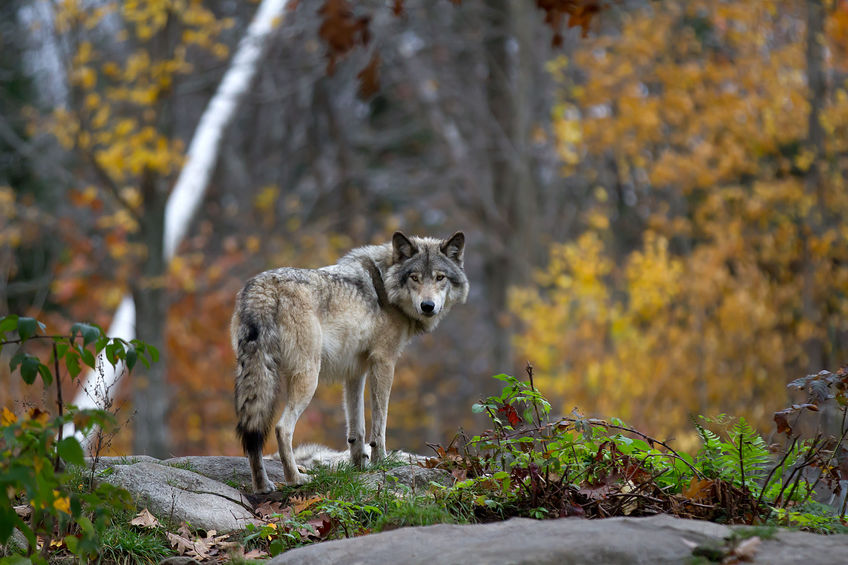More than 45 years after the gray wolf was listed as endangered under the Endangered Species Act (ESA), the administration on Oct. 29 announced the predator’s successful recovery and its delisting under the ESA.
The gray wolf population in the lower 48 states is estimated at more than 6,000, far exceeding the recovery goals of the two geographically separated and genetically diverse populations of wolves. One population of gray wolves inhabits the Western Great Lakes, where they roam and hunt in the northern parts of Michigan, Wisconsin, and Minnesota. A second population can be found in the Northern Rocky Mountains, where packs are now thriving across sections of Idaho, Wyoming, Montana, Washington, Oregon, California, and Colorado. Gray wolves are abundant in Alaska, and were never included under the ESA listing.
The Interior Department’s Fish & Wildlife Service’s decision excludes the Mexican wolf, which remains listed under the ESA.
Gray wolves in the lower 48 had been hunted to near extinction by the middle of the last century because of the threat they posed to livestock. Wolves are opportunists and would just as son dine of a cow as a deer. Their decreased numbers led to a proliferation of deer and elk, which, in turn, but strains on vegetation. One of the goals of putting the creature on the endangered species list was to restore some semblance of balance between predator and prey in the wolf’s habitat.
Still a Problem
While welcoming the wolf’s delisting, cattlemen whose herds graze in proximity to thriving wolfpacks view the future warily.
“The announcement will definitely impact of lot of northern cattle producers. Across the whole northern portion of Minnesota, we have seen the gray wolf population grow and continue to grow. As the population has come out of the endangered species limit, more of the cow calf producers are seeing more wolves on their property and seeing more wolf attacks on their livestock as well,” said Allison Vanderwal, executive director of the Minnesota State Cattlemen’s Association.
Those observations are echoed in the West. There, the task is seen as maximizing conservation efforts while minimizing predations by rogue packs.
Jim Popson, a rancher in southern Oregon, told the Capital Press that a rogue pack of gray wolves had established itself in the – appropriately name – Rogue River-Siskiyou National Forest. He grazes yearlings on 2,080 acres of grassy pasture nearby and must constantly try to protect his herd from hungry wolves.
Possible Reversal under Biden
For their part, environmental groups condemned the move, insisting that the ESA stringent land-use restrictions stay in place. They may ultimately get their wish. If Joe Biden becomes president on Jan. 20, look for the ESA wolf decision, the Trump administration’s ESA reforms, and all other Trump moves to loosen regulations to be systematically rolled back.
